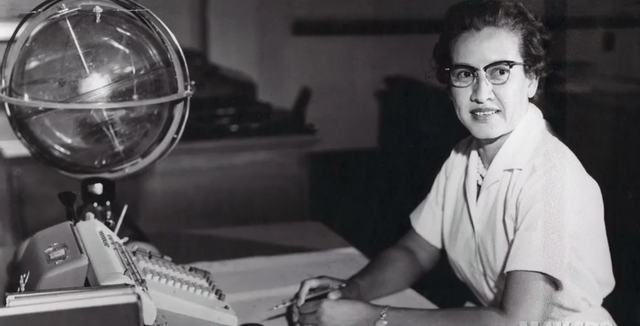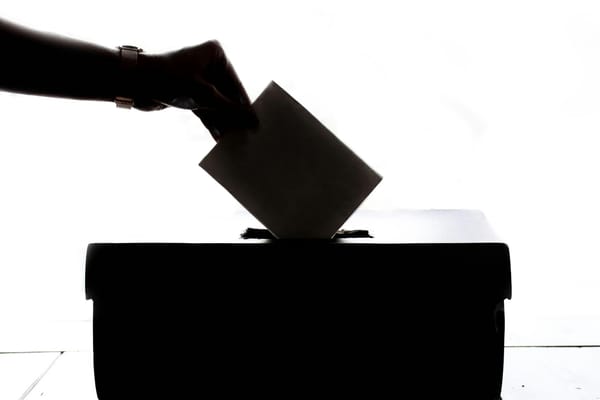Women in Science: Katherine Johnson

Katherine Johnson has been noted as one of the first African-American women to work as a NASA scientist. Her 33-year career at NASA and its predecessor, NACA, is exemplary as she mastered complex calculations and pioneered the use of computers in her field. In fact, the success of the first U.S. crewed spaceflights can be attributed to her calculations of orbital mechanics as a NASA employee.
Early Life and Education
Katherine Johnson was born on August 26, 1918, in West Virginia as the youngest of four children. From an early age, she showed a strong interest and capability in mathematics. As her county, Greenbrier Country, did not offer public schooling for African-American students past the eighth grade, her parents arranged for her and her siblings to attend high school in Institute, West Virginia, located on the campus of West Virginia State College.
After graduating at the age of fourteen, Johnson enrolled at the West Virginia State College, a historically black college, where she took a substantial number of courses in mathematics. She was mentored by several professors including Angie Turner King, the chemist and mathematician, and W.W. Scheiffelin Claytor, the third African-American to earn a doctorate in mathematics. With the help of her mentors, Johnson graduated in 1937 with great academic distinction, earning numerous degrees in mathematics and French. Subsequent to her graduation, she took on a teaching job in Marion, Virginia.
Johnson quit her teaching job after marrying her first husband, James Goble. Instead, she enrolled in a graduate math program however quit after one semester to focus on her family life. Despite this, she became known as the first African-American woman to attend graduate school at West Virginia University and the only woman selected to integrate the graduate school after the 1938 United States Supreme Court ruling in Missouri ex rel. Gaines vs Canada.
Career
In June of 1953, Johnson accepted a job offer from the National Advisory Committee for Aeronautics (NACA) for their Guidance and Navigation Department. For five years, she worked as a computer, analyzing data such as gust alleviation for aircraft. She was later reassigned to the Guidance and Control Division of Langley's Flight Research Division, a field dominated by white male engineers. Johnson and other African-American women were required to work, eat and use restrooms separate from those of their white male peers. This complied with Virginia's racial segregation laws and federal workplace segregation introduced in the early 20th century under President Woodrow Wilson.
“We needed to be assertive as women in those days – assertive and aggressive – and the degree to which we had to be that way depended on where you were. I had to be.”
Until her retirement in 1986, Johnson worked as an aerospace technologist. She calculated the trajectory for the space flight of Alan Shepard, the first American in space. She also calculated the launch window for his 1961 Mercury mission. Moreover, Johnson verified the calculations made with the help of electronic computers which calculated John Glenn's orbit around Earth. He became the first American to orbit the Earth. These calculations were said to be extremely complex given that they accounted for the gravitational pulls of celestial bodies.
To add on, Johnson helped calculate the trajectory for the 1969 Apollo 11 flight to the Moon. She also worked on the Apollo 13 Moon mission, in which her work on backup procedures and charts helped set a safe path for the crew's return to Earth after the mission was aborted. Her work inspired a one-star observation system that would allow astronauts to accurately determine their location in space.
Katherine Johnson's achievements do not stop there. She co-authored 26 scientific papers and was named West Virginia State College Outstanding Alumnus of the Year in 1999. On November 24, 2015, President Barack Obama presented her with the Presidential Medal of Freedom and cited her as a pioneering example of African-American women in STEM. In 2016, Johnson was included on the BBC's list of 100 Women of influence worldwide in 2016. And on May 12, 2018, she was awarded an honorary doctorate by the College of William & Mary. In August that same year, West Virginia State University established a STEM scholarship in honor of Johnson and built a life-size statue of her on campus. In 2019, she was announced as one of the members of the inaugural class of Government Executive's Government Hall of Fame. Johnson even had a satellite named after her which was launched into space on November 6, 2020.
Retirement and Death
Following retirement, Johnson enjoyed traveling, playing bridge, watching sports, and cherishing moments with her family. Her involvement extended to various panels and conferences, including the NASA Trailblazers and Legends STEM Conference held in Cape Canaveral, Fla., in 2010. Frequently engaging with students, she shared insights from her remarkable career, passionately advocating for STEM pursuits. Emphasizing the enduring relevance of science, engineering, technology, and mathematics, she imparted, "We will always have STEM with us. Some things may fade from public view, but the essence of science, engineering, and math remains constant." Johnson's impactful speeches inspired numerous students to pursue STEM paths, a fact she often heard during her panel participations. She maintained connections with NASA personnel, leveraging their support to underscore STEM's significance to diverse audiences.
Johnson died at the remarkable age of 101 in a retirement home in Newport News on February 24, 2020.



